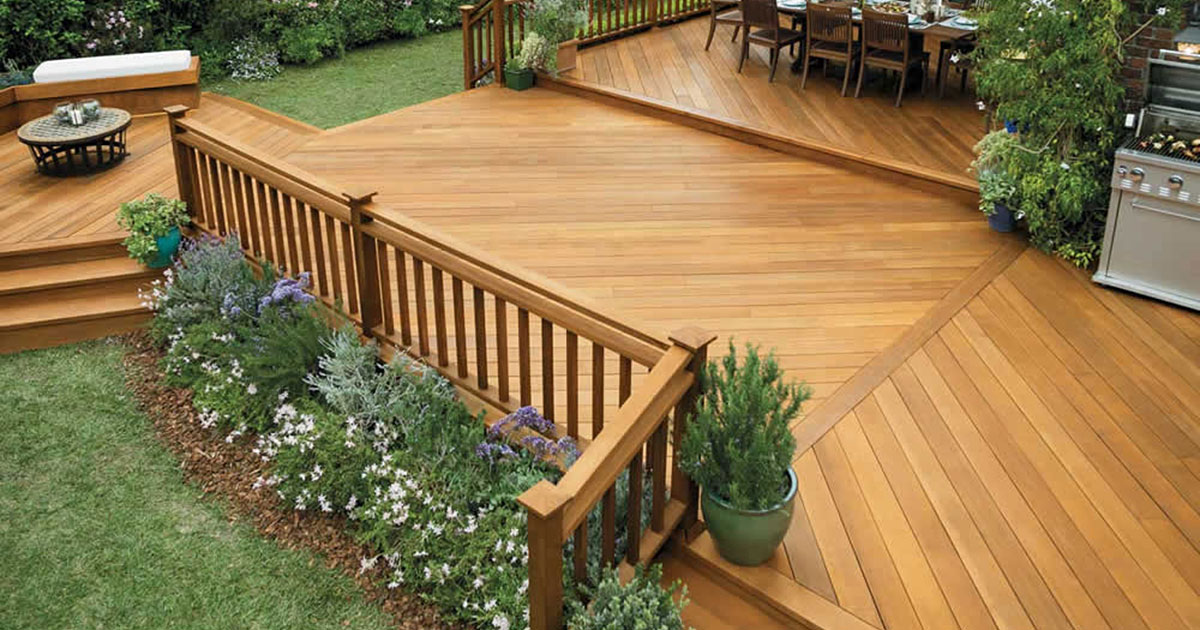Renew Your Outdoors: Professional Deck Staining Providers
Renew Your Outdoors: Professional Deck Staining Providers
Blog Article
Picking the Right Spot for Your Fencing: Tips and Considerations
When it comes to enhancing the appearance and preserving of your fence, selecting the ideal stain is crucial. We will discover the various kinds of fencing stains, elements to think about before choosing a stain, suggestions for preparing your fence for staining, and the differences between oil-based and water-based spots. In addition, we will certainly dive right into selecting the right stain color to enhance your fencing and boost your outside area.
Comprehending Different Kinds Of Fence Discolorations

On the various other hand, water-based discolorations are made from acrylic or latex and offer a much more refined shade to the timber. They develop a safety film on the surface area of the timber, preventing wetness from permeating in and securing versus UV damages. Water-based discolorations are easier to clean up and have a quicker drying out time contrasted to oil-based stains. They are also less most likely to discolor or crack in time.
Choosing between oil-based and water-based stains depends on numerous factors, including personal preference, the desired appearance, and the degree of upkeep needed. Oil-based discolorations are suggested for surround high-traffic locations or those constantly revealed to severe climate condition. fence staining and sealing. Water-based stains, on the other hand, are a popular choice for fencings in suburbs where appearance and ease of usage are very important
Recognizing the distinctions in between water-based and oil-based spots assists property owners make an informed choice when choosing the appropriate tarnish for their fence. Thinking about the particular demands of the fencing, such as its place, direct exposure to sunshine, and preferred visual, will certainly ensure that the chosen stain provides lasting protection and enhances the total beauty of the fence.
Factors to Think About Prior To Picking a Discoloration

One more element to consider is the sort of timber your fence is made of. Various kinds of timber take in spots differently, leading to varying degrees of color strength and toughness. For instance, softwoods like yearn may call for more constant discoloration compared to woods like cedar or redwood. Furthermore, certain timbers might be more vulnerable to problems like rot or insect problem, which may affect the choice of discolor to protect and protect the fence.
The climate and weather condition problems in your area should likewise be taken into consideration. You may need a stain that supplies additional security versus wetness and UV rays if you live in a location with harsh winters months or high humidity. If your fence is exposed to direct sunshine for lengthy durations, a discolor with UV preventions can aid protect against fading and staining.
Last but not least, it's vital to consider your wanted visual. Various spots provide various colors and coatings, permitting you to customize the look of your fence (fence staining and sealing). Consider the overall design and style of your residential or commercial property, as well as any neighborhood guidelines or property owner association standards that may dictate the appropriate stain shades
Tips for Preparing Your Fence for Discoloration
To prepare your fencing for discoloration, start by thoroughly cleansing the surface area utilizing a mild cleaning agent and a pressure washer or scrub brush. Cleaning the fence is an important action as it eliminates dust, grime, and any kind of previous layers that might interfere with the discoloration process. Begin by moistening the fencing with water and afterwards apply a moderate detergent making use of a scrub brush or a pressure washer with a low-pressure setup. Rub the surface carefully, paying additional attention to areas with persistent stains or mold and mildew. Wash the fence extensively with clean water to eliminate all traces of cleaning agent.
This step is important as tarnishing a wet or moist surface can lead to inadequate bond and an irregular surface. Make certain that the fencing is entirely dry prior to proceeding read this article with the staining process.
Before staining, inspect the fence for any damages, such as loose boards or nails. Repair any issues to guarantee that the fence is structurally sound. Furthermore, take into consideration using a wood conditioner or brightener to the surface. This product helps to open the timber pores, allowing the stain to pass through better and equally.

Contrasting Oil-Based and Water-Based Discolorations
When selecting a discolor for your fencing, it is essential to contrast the characteristics and benefits of water-based and oil-based stains. Both types of spots have their very own benefits and factors to consider, so it is crucial to comprehend the distinctions between them.
Oil-based discolorations are recognized for their sturdiness and resistance to deterioration. They penetrate deeply into the timber, supplying superb protection versus the components. They additionally enhance the all-natural elegance of the timber by highlighting its grain and texture. Furthermore, oil-based spots often tend to last longer than water-based discolorations, making them a popular choice for fences.
On the other hand, water-based discolorations are much more environmentally pleasant and less complicated to cleanse up. They might not offer the same degree of protection as oil-based discolorations, particularly in harsh climate problems.
Ultimately, the selection between oil-based and water-based discolorations relies on your certain needs and choices. Think about factors such as durability, ecological influence, and simplicity of application when making your choice. Consulting with an expert or looking for suggestions from specialists can also aid ensure that you select the right discolor for your fencing.
Choosing the Right Spot Color for Your Fence
The choice of an appropriate discolor shade for your fence is a crucial aspect of boosting its aesthetic allure and complementing the general style of your exterior space (fence staining and sealing). The ideal stain shade can transform a plain, common fencing right into a striking centerpiece that includes deepness and character to your residential or commercial property
When choosing a discolor color for your fencing, it is important to take into consideration the design and style of your home. If you have a conventional or timeless style home, natural tones such as browns and neutrals can produce a warm and welcoming look. On the other hand, if you have a contemporary or contemporary home, you could consider deciding for vibrant and lively shades that make a statement.
One more variable to consider is the natural environments of your property. If you have a great deal of plant, a tarnish shade that complements the natural landscape, such as eco-friendlies or crimsons, can create a harmonious and cohesive appearance.
In addition, it's worth taking into consideration the upkeep needed for different stain colors. Lighter colors have a tendency to show dirt and wear even more conveniently, while darker shades can conceal imperfections and call for much less constant touch-ups.
Ultimately, the selection of discolor shade for your fencing need to show your individual style and choices - fence staining and sealing. Make the effort to seek advice from and discover different alternatives with professionals if needed, to make certain that you select the best stain shade that improves the beauty and charm of your fencing
Conclusion
In conclusion, when it comes to choosing the appropriate tarnish for your fencing, it is essential to recognize the various kinds of stains available and consider variables such as durability and wanted look. Picking the ideal stain color can enhance the total appearances of your fencing.
We will discover the different types of fencing stains, factors to take into consideration prior to choosing a tarnish, ideas for preparing your fencing for staining, and the differences in between oil-based and water-based stains.Differentiating in between oil-based and water-based spots is important when understanding various types of fencing spots. Water-based stains are much easier to clean up and have a much faster drying time contrasted to oil-based stains. Furthermore, oil-based spots often tend to last longer than water-based discolorations, making them a popular option for fencings.
In conclusion, when it comes to picking the appropriate tarnish for your fence, it is essential to recognize the different kinds of discolorations available and think about factors such as durability and wanted look.
Report this page